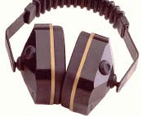Air purifiers mainly consist of an air filter and a fan or a motor. An air filter is used to clean the air from various airborne particles, such as mold, bacteria, viruses, dust, cigarette smoke, pollen and many others. It also helps to neutralize odors and gases in the indoor areas, whereas a fan or a motor makes the air flow into a filter, which can then capture dangerous pollutants and clean the air. Even more, a fan or a motor returns a cleaned, healthy air into the environment and hence is an important part of an air purifier.
However, a loaded fan produces noise. The noise level is one of the characteristics that describe a certain air purifier. Generally, the noise level of an air cleaning device depends upon the type and size of an air purifier. In addition, the noise level depends also on the quality of an air purifier and an air filter.
The noise level in air purifier
 One might assume that the bigger the air purifier the higher its noise level. However, it is not necessarily true. HEPA air purifiers , which are considered to be the most qualified and the most effective air cleaning devices in the world, do not necessary, emit a lot of noise. HEPA air cleaning systems are very big but, due to their high efficiency in performance and high quality of fans, they do not have high noise levels. The noise level of HEPA air purifiers varies from 45 to 58 decibels (dB) whereas noise levels of smaller but less efficient air cleaning devices may reach even up to 100 dB. More important, HEPA air purifiers are constructed in such a way that their noise levels may be changed and reduced if used at bedroom mode. A powerful and efficient fan, working at bedroom mode, has a noise level of only 31 decibels. Another advantage of not only HEPA air purifiers but of most high quality modern air cleaning devices is an additional sound sensor. It allows to automatically adapting to the noise level without actually disturbing those in the room.
One might assume that the bigger the air purifier the higher its noise level. However, it is not necessarily true. HEPA air purifiers , which are considered to be the most qualified and the most effective air cleaning devices in the world, do not necessary, emit a lot of noise. HEPA air cleaning systems are very big but, due to their high efficiency in performance and high quality of fans, they do not have high noise levels. The noise level of HEPA air purifiers varies from 45 to 58 decibels (dB) whereas noise levels of smaller but less efficient air cleaning devices may reach even up to 100 dB. More important, HEPA air purifiers are constructed in such a way that their noise levels may be changed and reduced if used at bedroom mode. A powerful and efficient fan, working at bedroom mode, has a noise level of only 31 decibels. Another advantage of not only HEPA air purifiers but of most high quality modern air cleaning devices is an additional sound sensor. It allows to automatically adapting to the noise level without actually disturbing those in the room.
The sound sensor works in such a way that it induces the cleaning process of an air purifier in noisier surroundings, and hence the fan works louder and more effective but does not disturb the well-being of the inhabitants. When working in a quiet environment, a sound sensor adjusts to a lower setting and is barely audible. Not everybody knows that the noise levels of air purifiers that contain air filters depend upon the maintenance of a cleaning device. Usually, manufacturers recommend to change filters or, in case of electronic precipitators, to clean the systems on a regular basis. This allows an air purifier to work on a more efficient basis as well as it lowers the noise level since the airflow is not constrained. Therefore it is important to follow manufacturer’s directions in order to achieve many benefits by a consumer. To compare noise levels of different air purifier types, ionic air purifiers are claimed to produce less noise than any other air purifiers. Ionic air cleaning devices are said to work silently even at a high mode since they do not contain a fan. In general, most air purifier manufacturers provide information on noise levels of their products.
Noise level types
Usually, there are different noise levels that vary with an air purifier’s cleaning capacity. Most air purifiers are able to work at different speeds which allow choosing the efficiency and the noise level. Noise levels vary from 20 to 40 decibels at a low speed, from 41 to 60 decibels at an average speed and from 61 to 80 and more at a high speed. No matter what speed, none of the air purifiers emit more noise than it is allowed by public health standards. Noise level of an air purifier is an important factor for a customer to know, since some of the air cleaning devices may emit low-frequency noise which could cause severe annoyance, physical and mental stress. Such low-frequency noise may become so irritating that the users tend to turn air purifiers off immediately. The best choice would be to buy an air purifier that has low noise level descriptions, different speed options and a noise sensor that allows an air cleaning device to adjust to different noise levels in the environment. The combination of those three allows customers to gain many benefits.